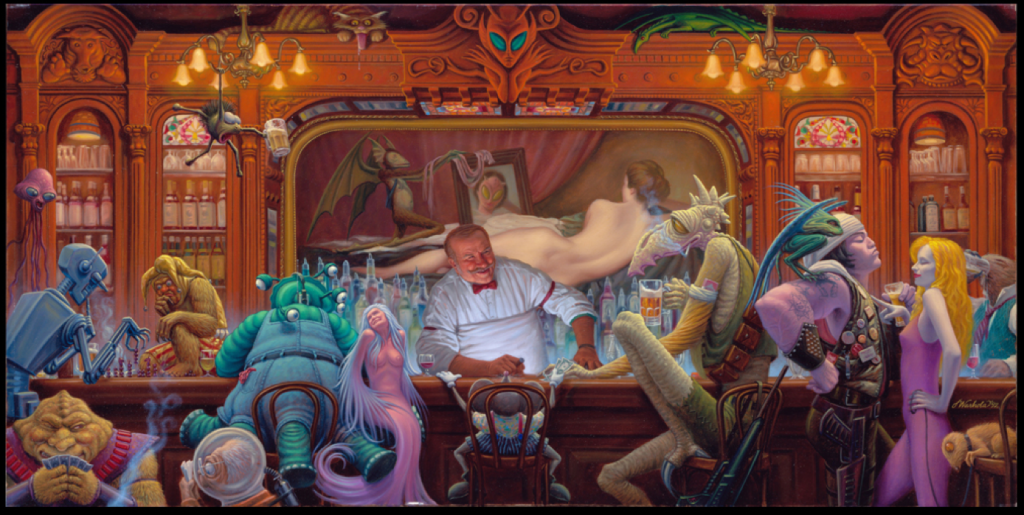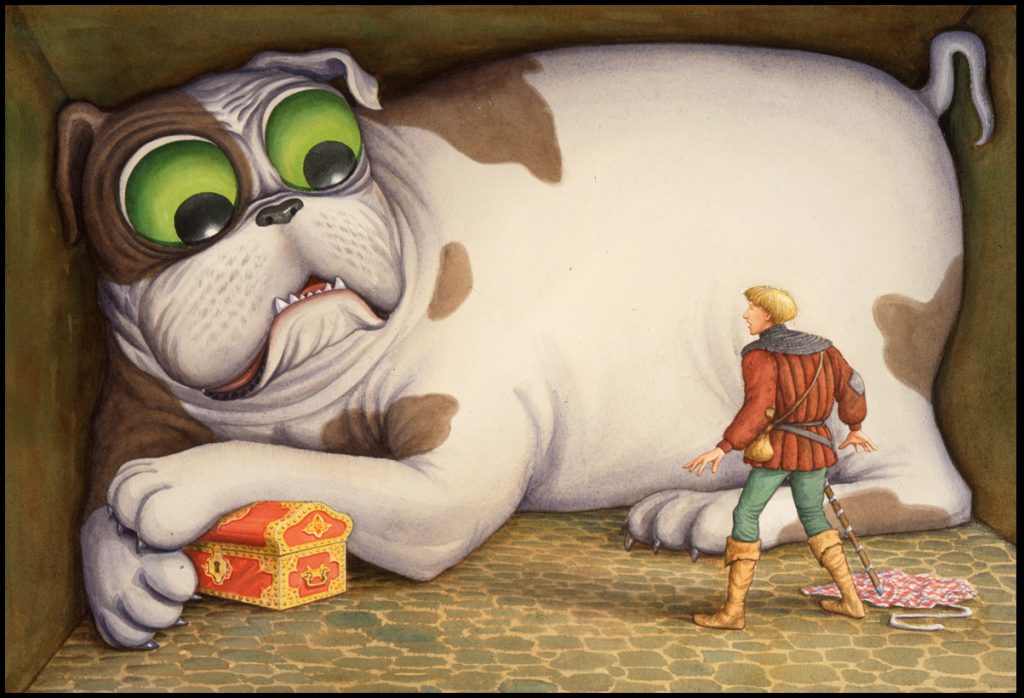James Warhola is an internationally renowned award-winning artist and illustrator, with over 300 science-fiction/fantasy covers to his credit and, since 1987, original pictures and covers for more than 30 new and classic children’s books, including two that he penned about his famous uncle, Pop icon Andy Warhol. He has been a regular contributor to MAD Magazine, and was one of the primary artists for the popular Garbage Pail Kids trading card series.
Like his famous uncle, the young Jamie attended the Tam O’Shanter art classes at Carnegie Institute in their native Pittsburgh, and later earned a bachelor’s degree in design from Carnegie Mellon University. After graduating, he moved to New York, where he continued his studies at the prestigious Art Students League, and worked for a period in the early 1980s in the Warhol studio.
On a recent visit to Philadelphia, and in recognition of the 28th anniversary of his uncle’s passing (22 February 1987), Jamie discussed his career as an artist, the impact Andy has had–and continues to have–on his life, and the Warhol projects on which he and his family are currently engaged.
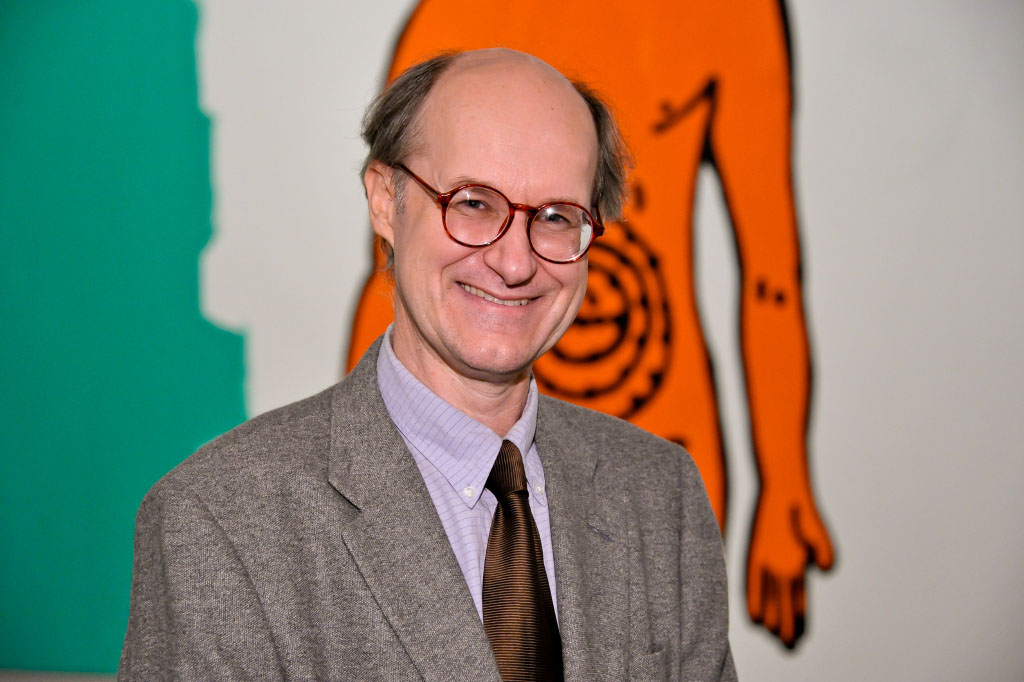
PHINDIE: Your two children’s books, Uncle Andy’s and Uncle Andy’s Cats, have been very popular worldwide. Where has your recent book-signing tour taken you, and how have you, and Andy’s legacy, been received?
JAMES WARHOLA: This past year has been amazing! Some major Warhol shows opened in Istanbul and Prague, and both were terrific. I was invited to participate with book-signings, lectures about my uncle, and art workshops for children. It was the first time Andy’s work was ever shown in Istanbul, an exhibition of prints at the Pera Museum. Everything was very well received by the people there, especially since our family is Byzantine Catholic and some of Andy’s work had its roots in the gold icons of Constantinople (earlier named Byzantium, and now Istanbul). In Prague, in the old part of the city, I showed original watercolors from my two books on Andy as part of the opening exhibition of the new Pop Art Centre, celebrating European and American artists associated with the movement. I also did a lot of interviews, discussing Andy’s connection to the area where his parents came from (Medzilaborce, in Slovakia). Another place I had a book-signing and showed my illustrations, along with my collection of Andy’s line drawings of faces and feet–his favorite subjects in the ‘50s–was in Lancaster, PA, and that was also a wonderful experience. The people who attended seemed very happy to have access to works they don’t normally get to see.
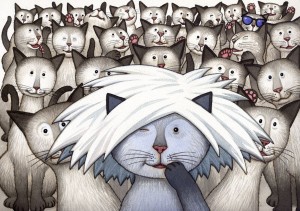
PHINDIE: What are your most treasured memories of your uncle, both from your childhood and as a professional artist?
JW: At an early age my brother and I used to sit on the staircase outside Andy’s bedroom when our family went to visit him in New York. We would wait for the door to crack open a bit in the morning, then we would burst into his room and sit on his bed and listen to his stories about what he did the night before—how his evening went and all the famous people he was with. We were a good audience! It was a big bed with a canopy over it, and the room was filled with artworks, and his wigs were all around. It was a great atmosphere, like he was royalty holding court! And he had such a funny sense of humor. He might be on the phone with a celebrity when we entered and he’d say, “Oh, Jamie the milkman just came in!” Then he’d laugh, and we’d laugh. I really do miss his sense of humor with us kids. He didn’t feel restrained with us at all; I almost think he could relate to kids better than adults, because everything wasn’t so serious. Later, when I first moved to New York, he had great insight into giving me professional advice, and I regret not having taken it more seriously. He often said that illustration was a dying art and I should go into photography and film: “You should be out in Hollywood, making films like Star Wars!” He always thought big, and that motivated him to accomplish big things. I was more of a realist, so I didn’t see it as possible, but Andy was definitely an idealist; to him, nothing was impossible.
PHINDIE: What changes have you seen in the fields of illustration and publishing over the years, and especially in our current digital era?
JW: Illustration as we once knew it is almost gone; the need is just not the same. All types of media have gone digital, rarely are illustrative images still created by hand on paper, so it’s hard to make a living as anything other than a digital artist; they’re not working with paints, but with pixels. It’s like the creative part has shifted to video or computer animation, and it’s difficult for a traditional artist to adapt. It’s also hard for the younger generation to have a real hands-on experience with the art they’re creating, there’s no direct contact; it removes the human touch by going through a machine.
PHINDIE: What’s your first creative memory? At what age did you first know you would be an artist?
JW: I remember at a very early age I wanted finger paints and I threw a temper tantrum! I don’t know where I got the idea that I wanted to do finger art, but I cried my head off, so my parents bought me the paints, and I did it. I think I was only about three years old, but I remember it so clearly. My dad said to my mother, “We have to get him some paint to make him happy!” My parents knew, because of Andy, that being an artist was a possibility; it wasn’t foreign to them.
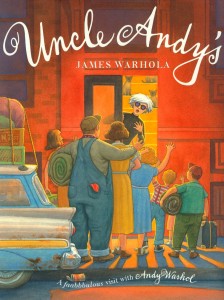
PHINDIE: What’s your favorite work by Andy, and why?
JW: I have a lot of favorites, but everything he did in 1962 was incredible and magical. I remember all of those large Pop paintings he had all over his house, he was very prolific that year, and everything he was doing was so interesting. In a very short time he went from small-scale works to huge paintings; all of a sudden his horizon expanded into a whole different area on big canvases—Soup Cans, Dance Steps, Paint-by-Numbers, movie stars—just massive compared to what he did in the ‘50s. He had a revelation that art should be big to be noticed.
PHINDIE: What do you consider to be Andy’s greatest contribution to the history of art?
JW: Taking an image from everyday life and transforming it into something else, making it art, putting it on a stage and putting a spotlight on it.
PHINDIE: Tell us about the Warhola family’s current project on Andy. Why did the family decide to create its own film on your uncle?
JW: Finally a member of the family is doing a documentary with a Warhola point of view! It came about because my dad (Paul Warhola, Andy’s eldest brother) passed away last January (2014), so my niece Abby and her partner Jesse (Best) realized that the interviews they did with him, her grandfather, should be preserved and used as the basis for a film. It will focus on the side of Andy that hasn’t been considered, the personal side; how he transformed himself from a shy kid in Pittsburgh to an illustrator, and then to a fine artist. We had a great view of him in a different light, we saw a side of him that others didn’t. He was such a unique person, and we always knew that he was special, yet it was hard to believe that my dad’s youngest brother became a world-famous artist and such a public figure! That will be the perspective of the Warhola Films work, the more intimate familial side of Andy.
PHINDIE: What are the most common misperceptions about Andy that you would like to correct?
JW: I want people to know that he was very smart, and he was an incredible problem-solver. When he first came to New York, after graduating with a bachelor’s degree in pictorial design from Carnegie Tech (now Carnegie Mellon), he worked with art directors and publishers, and for ten years he absorbed all that knowledge, so that he truly understood design, color, and line, and then transferred it to his fine art. He had a wonderful mind, he worked very hard, and learned. He created his imagery on instinct and was super confident. He just knew it was right. People think it was luck or an accident that he became so famous, but he was the most qualified, the best trained, and the most creative of the artists of that time, a true genius of Pop Art. He also had a certain type of magic that he got from his mother Julia, from her roots in the old country, which brought something distinctive to his art, as well as to his personality.
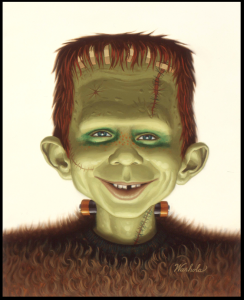
PHINDIE: What other projects are you working on at present?
JW: In addition to the book-signings and lectures, and helping a little bit with the film project, I’m doing a lot of painting–large-scale acrylics related to my humorous commercial works of the past. I’m finally transitioning into doing art for myself after all these years. Though I still like narrative illustrative painting, I also like art for its own sake, without the restrictions of an art director.
PHINDIE: What can we expect to see from you in the future?
JW: I hope some more gallery shows!
Thanks, Jamie! We look forward to updates on your future exhibitions and events, and on the Warhola Films documentary on Andy.
